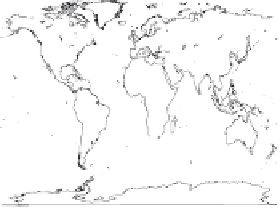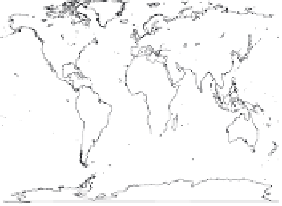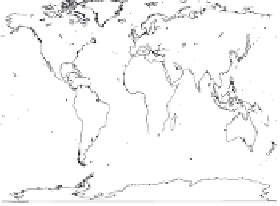Environmental Engineering Reference
In-Depth Information
% winters warmer than current warmest anomaly
1C gl
obal average
warming
% winters warmer than current 95th percentile
2C global average warming
% winters warmer than current 95th percentile
1C global average warming
100
100
10
90
90
90
50
50
50
70
70
70
0
50
0
50
0
50
−50
−50
50
10
10
10
0
0
0
−150 −100 −50 0 50 100 150
−150 −100 −50 0 50 100 150
−150 −100 −50 0 50 100 150
% winters warmer than current warmest anomaly
2C glob
al average warmi
ng
% winters warmer than current 95th percentile
3C global average warming
% winters warmer than current warmest anomaly
3C global average warming
100
10
100
90
90
90
50
50
50
70
70
70
0
50
0
50
0
50
−50
50
−50
10
10
10
0
0
0
−150 −100 −50 0 50 100 150
−150 −100 −50 0 50 100 150
−150 −100 −50 0 50 100 150
FIGURE 4.8 Chances that December-January-February average temperatures will be warmer than the 5th percentile of the climatological
distribution (1971-2000)—left column—and warmer than the warmest (boreal) winter in the climatological distribution—right column—for
different degrees of global annual average warming (1°C, 2°C, and 3°C ,respectively, along the three rows). Global average warming is calcu-
lated with respect to 1971-2000 averages. To obtain warming with respect to pre-industrial add 0.8°C.





























































































































































































































































































































































































































































































































































































































































































































































































































































































































































































































































































































































































































































































































































































































































































































































































































































































































































































































































































































































































































































































































































































































































































































































































































































































































































































































































































































































































































































































































































































































































































































































































































































































































































































































































































































































































































































































































































































































































































































































